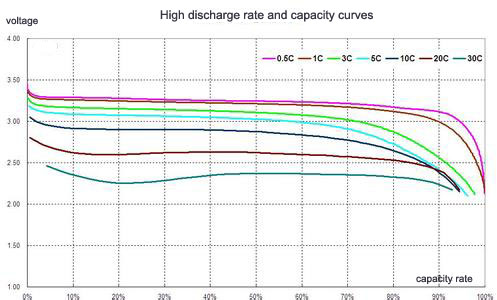How long do lifepo4 batteries last?
LiFePO4 batteries are Lithium-ion batteries that have grown in popularity in recent years due to their high energy density and exceptional safety. If properly cared for, they can last for more than ten years. In this article, we’ll look at the lifespan of LiFePo4 batteries and some tips for extending their life.

Understanding LiFePO4 Batteries
What are the basic components of LiFePO4 Batteries?
The cells, which have a graphite anode and a cathode made of lithium iron phosphate, are the essential parts of a LiFePO4 battery. The cells are then contained in a container after being connected by an electrolyte solution. A battery management system (BMS) is also necessary for LiFePO4 batteries to track and control the flow of electricity inside the battery.
What are the advantages of LiFePO4 Batteries?
The main advantages of LiFePO4 batteries include their high power density, low self-discharge rate, and good thermal stability. These features make them well-suited for applications that require frequent and heavy use, such as electric vehicles or solar energy storage systems. Additionally, the chemistry of LiFePO4 cells is much safer than other lithium-ion batteries, making them less prone to catching fire in the event of an accident or malfunction.
What are the types of LiFePO4 Batteries?
There are several types of LiFePO4 batteries, including:
Prismatic LiFePO4 Batteries: These batteries have a flat rectangular shape and are often used in applications where space is a constraint.
Cylindrical LiFePO4 Batteries: These batteries have a cylindrical shape and are often used in applications that require a higher energy density and longer life than prismatic batteries.
Pouch LiFePO4 Batteries: These batteries have a soft pouch-like packaging and are flexible, making them ideal for applications that require a flexible form factor.
Modular LiFePO4 Batteries: These batteries are composed of several smaller batteries connected in series or parallel to provide the desired voltage and capacity.
Custom LiFePO4 Batteries: These batteries are designed to meet specific customer requirements and can be tailored to fit particular applications.
Each type of LiFePO4 battery has unique advantages and disadvantages. The choice of which type will depend on the application’s specific requirements. For example, a prismatic battery might be the best choice if space is a constraint. In contrast, a pouch battery might be the best option if a flexible form factor is required.

What are the determinants of LiFePO4 Battery Life?
Several factors, including the quality of the battery, operating conditions, usage and maintenance, and storage conditions, determine the life of a LiFePO4 battery. High-quality LiFePO4 batteries are more reliable and have a longer lifespan than low-quality batteries. Similarly, operating conditions, such as temperature, humidity, and vibration, can affect the battery’s life. Using the battery within its specified operating conditions and regular maintenance can help extend its lifespan. Proper storage conditions, such as avoiding extreme temperatures and keeping the battery fully charged, are also crucial for maximizing the battery’s lifespan.
Real-World Examples of LiFePO4 Battery Life
In real-world examples, LiFePO4 batteries are used in various applications, such as electric vehicles, solar energy storage, and marine applications. LiFePO4 batteries can last for several years and thousands of miles in electric cars. LiFePO4 batteries can provide reliable performance for over ten years in solar energy storage. And in marine applications, LiFePO4 batteries can last for several seasons, depending on usage and maintenance.
Tips for Maximizing LiFePO4 Battery Life
Maximizing the life of your LiFePO4 battery is an essential part of owning one. Proper charging is critical to ensuring the best performance and most extended life out of your battery. Here are a few tips to help you achieve this:
Proper Charging
First, make sure that you always charge your battery at the correct voltage and current. This will depend on the type of LiFePO4 battery you have, so be sure to check the manufacturer’s specifications before charging. Additionally, avoid overcharging or undercharging your battery, as this can cause damage and reduce its lifespan.
Optimal Operating Temperature
To maximize the life of a LiFePO4 battery, it is essential to keep it within its optimal operating temperature range. Generally, this range is between 20°C and 40°C. Keeping the battery at or below these temperatures will help ensure that it has a long lifespan.

Regular Maintenance
Regular maintenance, such as checking the battery’s voltage and cleaning its terminals, can also help keep it in good condition. Secondly, always check your charger regularly for any signs of wear or malfunction. A faulty charger could result in overcharging or undercharging, which could permanently damage your battery’s cells.
Proper Storage
Store your battery in a cool, dry place away from direct sunlight and extreme temperatures, and keep the battery fully charged. This will help maintain the battery’s charge and prevent it from losing capacity over time due to heat.
In conclusion
The lifespan of a LiFePO4 battery depends on how it is used and stored, as well as the environmental conditions present. On average, LiFePO4 batteries can last up to 10 years or more with proper care and maintenance. Factors such as storage temperature and cycle depth also play a role in the longevity of your battery.








